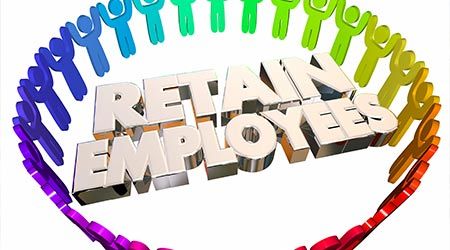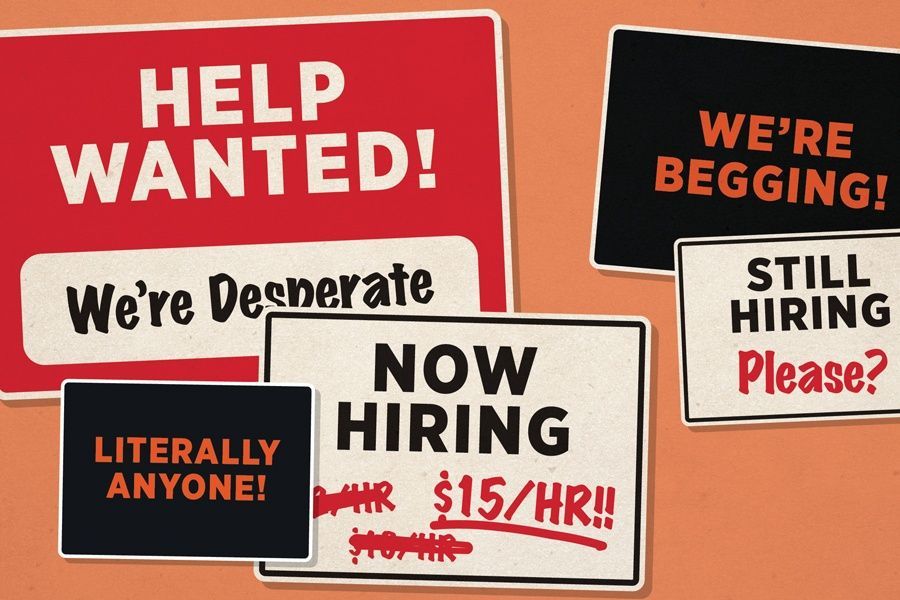 I continue to be dumbstruck by the number of human service organizations – child welfare, social services, mental health, education and juvenile justice – that continue to spend a great deal of money buying new programs, training, and/or curriculum for their direct service staff, telling them to do this new “thing” that will result in improved client/student success – but they continue for a decade to not improve results. One has to ask why we continue to do the same thing repeatedly hoping to get a different long-term result, but they don’t. That is the definition of insanity. It’s time to stop trying to “fix” direct service staff/teachers and look at ourselves – the organization’s leaders – and acknowledge that if you want to really improve service/educational outcomes then you must first change how the organization operates.
I continue to be dumbstruck by the number of human service organizations – child welfare, social services, mental health, education and juvenile justice – that continue to spend a great deal of money buying new programs, training, and/or curriculum for their direct service staff, telling them to do this new “thing” that will result in improved client/student success – but they continue for a decade to not improve results. One has to ask why we continue to do the same thing repeatedly hoping to get a different long-term result, but they don’t. That is the definition of insanity. It’s time to stop trying to “fix” direct service staff/teachers and look at ourselves – the organization’s leaders – and acknowledge that if you want to really improve service/educational outcomes then you must first change how the organization operates.
Trauma is defined as external event(s) either one time or ongoing that results in a recipient becoming emotionally overwhelmed and powerless. Once a person becomes traumatized, that trauma is the # 1 barrier to change. The research is clear – you must treat the trauma first and not re-traumatize.
What does that mean to us as organizational leaders? It means in simplest terms that we need to change how the organization works with its staff before you try to change how the staff works with its clients/students. This is parallel practice. Parallel practice tells us that how those who have power over us treat us set the model for how we treat those we have power over.
It we are going to do trauma treatment/recovery then we need to understand the three researched strategies – we must create safety, positive engagement, and empowerment of the traumatized staff and only then clients.
There is an error being promulgated which is safety is created by rules and consequences that are consistently enforced and by “zero tolerance” standards.
Both are false and actually simply re-traumatize.
Look at natural disasters, hurricanes, floods, tornados, fires, etc. When a natural disaster occurs, agencies like the Red Cross come in and offer shelter, food, clothes, etc. to provide the space for someone to feel “safe” again. We offer safety from the natural disaster.
When the cause of the trauma is people; people who have power over us, who neglect us, physically abuse us, sexually use us, rape us, destroy our home, our life, our source of income, our right to choose for ourselves – they cause us pain that overwhelms and leaves us feeling unsafe, unconnected, and disempowered.
Safe means not causing more pain, not threatening more. Safe means offering a place where those in power (the organization’s leadership and supervisors) do not supervise us in a threat of punishment model. That threat of punishment model simply reinforces the prior experience that those who have power over us are unsafe. If I work in an organization that threatens staff then that staff operates at an unsafe level that means they focus on trying to stay safe. What do we get as a result – unions being overly (and rightly so) protective of their union members, high levels of sick leave, and turnover. We get supervisors who complain the young line staff can’t think, are always asking them what to do, and not willing to work one extra minute.
Why would anyone agree to work more for an organization that they do not feel positively connected to, they do not feel safe from punishment, and/or they do not feel empowered?
Safe means moving an organization to success-focused supervision rather than seeing staff when it’s time to issue corrective actions and sanctions.
Safe means running the organization in a personal responsibility model not a progressive discipline model.
My experience is most baby boomer senior leaders say their organization is safe – yet when I look at their employee handbook and HR practices they are anything but safe.
A set of examples on safety:
- If the rules change according to who the supervisor is or how far up the hierarchy they are then that is an unsafe organization.
- If staff check in to see if someone is in a good or bad mood, or wait till supervisor R is out so s/he can talk to supervisor S, that’s unsafe.
- If you have open door policy at every level and staff come to persons higher up rather than their supervisor that tells us it’s not a safe organization.
- If employees’ job descriptions are lengthy and not behavior-based, it is unsafe.
- If there is a detailed description of progressive discipline process, it’s a threatening place and that is unsafe.
These are a few common indicators of an unsafe organization. There are dozens more.
If you think you are a safe organization then get an outside safety assessment and see what that person sees.
The second strategy is positive relationships
I define these relationships as people who are there to help me succeed and do so without threatening me. It’s not what the organizational leadership thinks or what supervisors think, it what the line staff says when asked in a way that it is safe for them to speak their truth. Management asking about employees positive regard toward their supervisor, management, and the organization is not safe for employees to be truthful in most organizations.
In the last 4 organizational audits I did, when I met with direct service staff I got the same feedback:
- “This is not a safe organization”
- “People use power to threaten.”
- “It’s not an organization based on success.”
- “ Supervisors don’t care about me.”
When an organization works with its direct care staff/teachers in a punitive, threatening, non-success focus, when you only see your supervisor when there is a problem, that is a not an organization that has positive relationships between staff and supervisors and staff and leadership.
The third strategy is re-empowerment.
Empowerment does result from organizational leadership telling staff what to do, from correcting staff from using progressive discipline. It comes from an organization that works from a value position of personal responsibility.
Please read my January and February issues of Leading Outside the Box for further explanation of personal responsibility. They are available on my web site.
Empowering staff does not mean giving them the right to make organizational decisions, but it does mean offering them a voice when organizational decisions directly impact them are being made.
Empowering does not mean losing your power but learning how to give them a greater sense of power within the organizational context.
Empowerment comes from how every supervisor at every level of the organization works with those they directly supervise.
It’s not having supervisors take a course; it’s having the organization adopt and align its written policies, procedures, and practices to support it.
It starts with the organization’s leaders, then its supervisors, changing how they practice and aligning organizational written documents to support practices that will result in having a direct service/teaching staff that become willing to make the changes to help clients and students be success-focused also.
It’s about modeling accountability starting with how management and supervisors work with staff consistently in a positive approach across the organization – that is what creates safety. These people are here to help me and teach me and I can count on that consistent approach at work.
When the organization becomes a safe place with positive relationships between staff and supervisors/management and staff feel empowered, you will now have an organization that has been trauma treated and is now in recovery. Once the organization is in recovery you can trauma treat clients/students and they then will also become more able to change and be successful.
If this is what is key to your organization’s long-term success then it should be a key strategic goal in your strategic plan. Is it one of yours?
LEADING FROM OUTSIDE THE BOX is a monthly newsletter for human services leaders.
Its purpose is to challenge your thinking and help you improve organizational and outcome performance.
To receive your copy free, simply email Jeff Bormaster and ask to be added to the mailing list. Feel free to share these newsletters with other human services leaders, simply include the contact information.
You can read previous issues of Leading Outside the Box at www.jeffbormasterconsulting.com/topics










